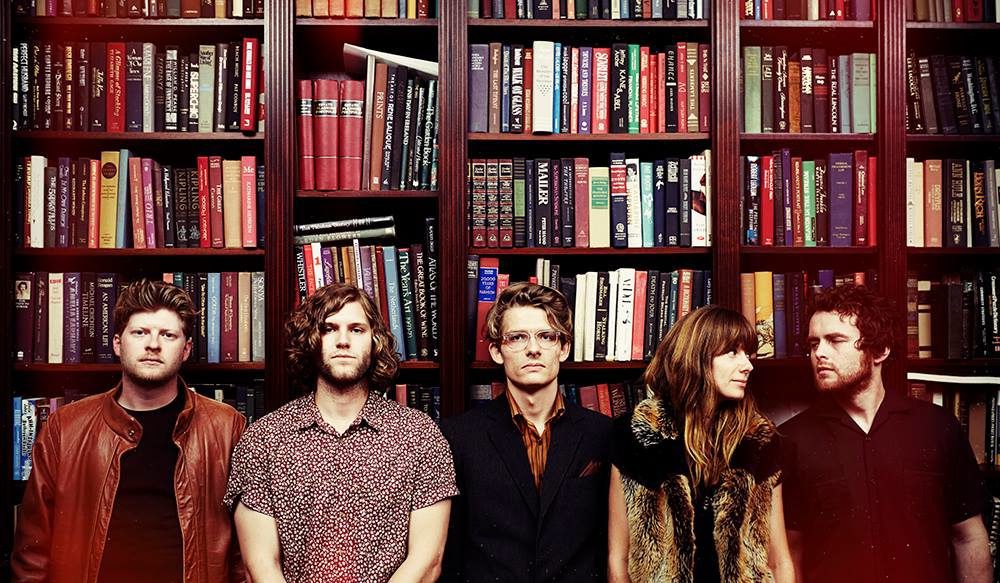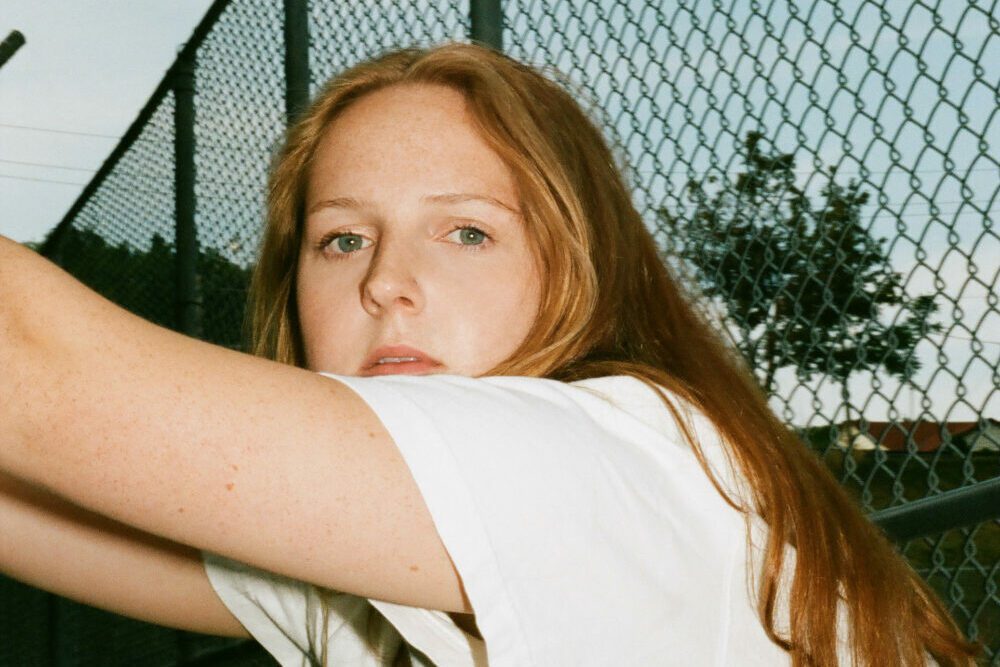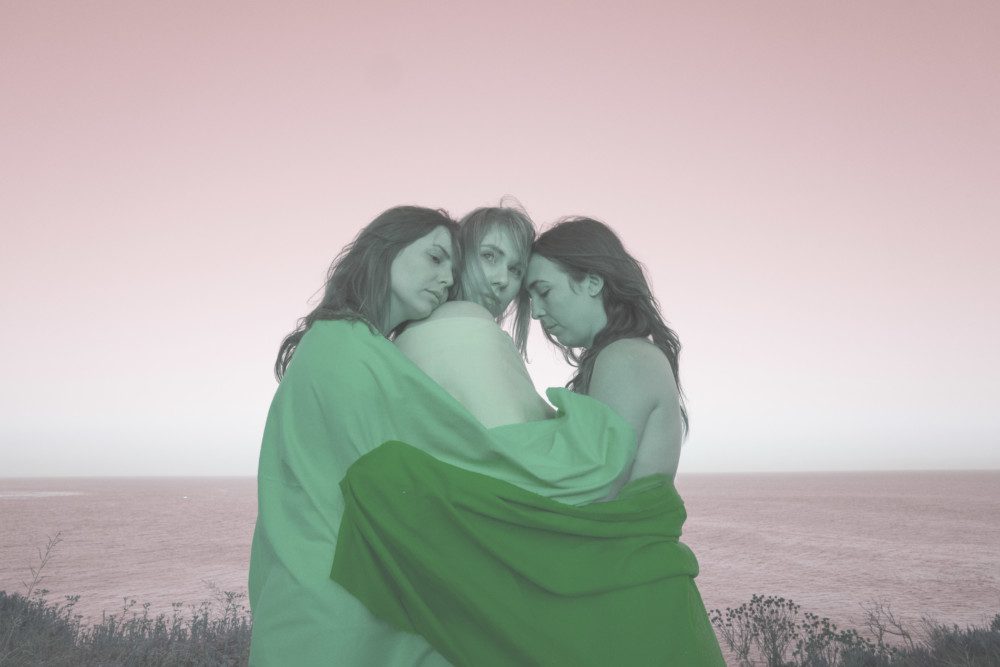
Half-Inuk, half-Mohawk indie pop songwriter Beatrice Deer hails from Quaqtaq, a small village in Northern Arctic Quebec that’s only accessible by plane. There, she planted the seeds of what she would become—a television director, clothing-maker, mental health advocate, a mother and songwriter—and there she returned to film a heartwarming music video for her rendition of the traditional Inuk song, “Immutaa.”
Teeming with the children of Quaqtaq, bundled up to their noses in snow suits and dancing in their school gymnasium, the video for “Immutaa” is an upbeat and unadulterated view of this vibrant yet underserved indigenous community in Canada. Deer aims to shed light on her Inuk roots by spreading their traditional music, folk tales and legends—the Inuk cultural story—through her raw, joyful songs that oscillate between English, French, and the native Inuk tongue. She also carries on the tradition of Inuk throat singing in much of her music.
Recently, Deer caught up with Audiofemme to talk about her Inuk background, the filming of the Beatrice Deer Band’s sweet video for “Immutaa,” and her most recent album, My All To You.
AudioFemme: Where is this music video set and why did you choose this location?
Beatrice Deer: The music video is set in my hometown, Quaqtaq – the place I was born and raised and where I learned the song at school, in grade one with my auntie Louisa Kulula as my teacher. I chose this location because I wanted to involve my community and the children who love the song so much. Music is a communication between the musicians on stage and the audience and I wanted the video to be a part of the audience as much as it is ours as the band. I want the world to see the warmth of my community and the people in it.
AF: Who are the children? Why did you want them in the video?
BD: The children in the video are the children of Quaqtaq. They are my family. They are my friends’ children. They are the future of Quaqtaq and Nunavik. I wanted them to have fun and experience something different. I want them to see themselves on a music video and realize that fun projects like that are possible to do, even for a small town girl like me. They’re me when I was their age.
AF: Can you translate the chorus of “Immutaa?” What does it mean?
BD: The song is a very old song and no one knows the date of origin or the songwriter. It’s ancient. It’s a bunch of words without a real story line. Random – when I say random, like extremely random – words like “Harvesting walruses, fish spears, milk, his mittens, five” among other things.
AF: I love how playful this song is. What about the hand gestures—at one point you have your fingers over your eye and the children mirror it—what does that symbolize?
BD: I do that hand gesture where I have my fingers over my eye when the song says in Inuktitut “and his eyes” and the children watch me do it so they mirror it.
AF: Tell me a bit about your background. How did you get into music?
BD: Music is something that I’ve always enjoyed ever since I can remember. My father plays bass and guitar, my mother plays organ and accordion so I grew up around music at home and at church where my parents played. When I was maybe four years old, I remember liking a melody (that turned out to be Roy Orbison as I later found as an adult) and other ’80s tunes that my older sister was listening to. I loved songs in Disney movies and movies like Grease when I was kid. My brother and I watched Michael Jackson’s Moonwalker video cassette until the tape disintegrated pretty much. I always dreamed of being a performer on stage. I was 13 when I asked my father to show me some guitar chords but I wasn’t that serious about it as I mostly wanted to be a singer. As a teenager, I would blast music in my headphones and sing at the top of my lungs while my friends and I drove around town on a snowmobile or a 4-wheeler. I watched MuchMusic whenever I came to Montreal and recorded my favourite songs on VHS to take back home to Quaqtaq, as MuchMusic wasn’t available in Quaqtaq. I wrote my first song with my cousin Jaaji Okpik when I was 15. It’s called “Ilaapik.” We sang that song at a local hockey team’s fundraiser at the school gymnasium in 1998 in our hometown of 350 people. That was my first official performance.
AF: You seem to be involved in many different creative projects other than music—can you give me a brief synopsis?
BD: Right now, I’m fabricating an amauti as part of the upcoming Red Dress exhibition at the National Museum of History in Gatineau, Quebec in memory of the Missing and Murdered Indigenous Women and Girls as the Inquiry is coming to a close. An amauti is a coat that Inuit women wear to carry their babies on their backs from birth to about two years old. Hanging a red dress outside your door has become the memorial symbol of the missing and murdered indigenous women and girls in Canada. I am honored and humbled to have been asked to fabricate this red amauti to represent the Inuit women of Nunavik who have fallen victim to the tragedy. Also, I work in television production full-time so that’s my day-to-day job. I recently finished recording a cute children’s song for a production company based in Iqaluit, Nunavut. Collaborating on songs with other musical artists happens on a regular basis. And of course, so does writing new songs with my band.
AF: How did you learn to throat sing? Can you tell me a little bit about the tradition and your exposure to it?
BD: I learned how to throat sing at 18 from friends. Throat singing has been around for centuries and it’s a simple rhythmic imitating game between two women. The leader of the two start off by making an imitating sound of, for example, the river, and the follower mimics the exact same sound half a beat after and they create a pattern. It’s quite challenging and technical which makes it a lot of fun. It was a pass time activity as women spent their days at the camp while the men went out hunting for the family. No one really throat sang in Quaqtaq and I only used to hear it from time to time on the radio or the Inuktitut TV when I was growing up. It is because it was forbidden by the missionaries in the early 1900’s so the oppression caused Inuit to think it was bad. Times have changed and many, many girls and women throat sing thanks to passionate people to encouraged and taught the songs before the practice completely disappeared. We as Inuit prefer to keep it within our culture since it is unique to us and it was something we almost lost due to colonization so we kindly decline requests to teach outside our culture.
AF: Inuit culture is not very well-known by most outside of the community. Why have you made it your objective to share Inuit culture and teach others about it?
BD: We were an oppressed people until recently. We are only 12,000 Inuit in Nunavik and 60,000 in Canada. That is a small number comparing to other cultures in the world. We have gone through so much atrocities as a people due to attempts of assimilation in less than a century. The media portrays the negative image of Indigenous people so that’s what the majority only sees. It’s a one sided story. No one really questions the why and just assumes that we are all homeless, uneducated, on welfare and addicted to something. We didn’t get to where we are on our own. So, I try to make a point in educating about the resilience of my people and the beauty of our culture. Our values, beliefs, and ingenuity. All [of the] things that brought us here today.
AF: Tell me about your new album, My All To You. I know that companionship is a major theme, and that you invoke the legend of “Atungak.” Why do these themes come up on your new album and what do they mean to you?
BD: My All to You is really about giving in. Giving in to a higher power, giving in to vulnerability. There is strength in giving in to the right things. Life’s challenges can make us feel alone and powerless but knowing and believing we are not alone in whatever we go through can give us just what we need to get back up. It’s empowering.
I don’t invoke the legend of Atungak in the album. I wrote [a] song based on the legend of the shaman that an Elder told me, God rest her soul, because I value the tradition of story telling in Inuit culture. Storytelling was a nightly ritual in igloos and tents during nomadic times as families were going to sleep and it’s a shame that it’s not something that many of us do anymore. I wrote it because it’s my way of continuing the practice of Inuit storytelling.
AF: Who’s in your band? Is it the same personnel that’s on the album?
BD: It’s always the same core members and sometimes we’ll have keys or another throat singer. The core members are myself, Christopher McCarron on guitars, Michael Felber on bass, management and producer of My All to You, Jordey Tucker, on guitars, and Mark Weathon on drums, who [also] produced My All to You. I usually have my friend Pauyungie Nutaraaluk as my throat singing partner and Parker Shper on keys.
AF: Anything else you want people to know?
BD: Fun fact: The “eskimo kiss” is not the touching of two nose tips, it’s actually pressing both nostrils on the skin and inhaling—as shown at some point in the video. Just clearing things up!




